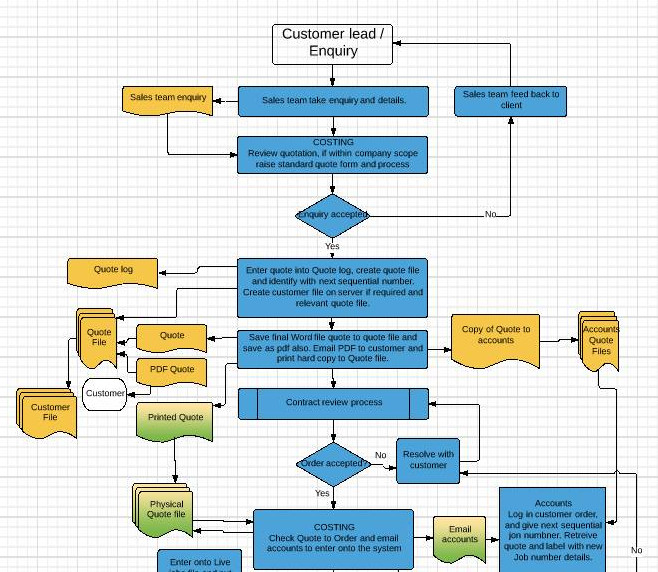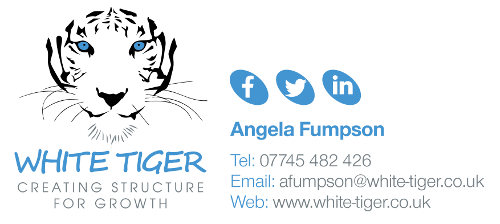Using A Process Map To Direct Change
7th February 2018 :: Guest Blog :: Author: Angela Fumpson
Process Mapping is a technique of using flowcharts to illustrate the flow of a process, but it rarely focuses on the job titles or responsibilities just the workflow.
I believe that even at the high level we can gain a new perspective on the detail and include key responsibilities, documents and communications that enable us to better highlight opportunities for improvement.
How do we do this? There is no wrong or right way just an open mind so we can get creative and include documents, data sources, communication channels and use colour coding for skills and responsibilities. Quite often an area that creates stress in a system and failures are the human elements the links between the chain or passing of information from step to step. Whether you are setting up a new business or taking stock of where you are and where you need to be, a process mapping exercise can be very enlightening.

The exercise I am talking about is not “just a flow chart”. It is an in-depth analysis of the actual flow or sequence of events in a process with the environment and triggers that enable each step to happen and the resulting product or information that follows. Making sure we address all the “what ifs” along the way to ensure there is an action and pathway that can be taken when things don't happen in the way we expect. Process maps can be applied to anything from a sales process, raising an invoice, production flow or the whole customer journey. It is a team exercise to identify why people do what they do and gather new ideas to innovate and spark change. It is not a blame or problem seeking exercise we are focusing on what we could do to or provide to make their job easier and more consistent in results.
A system is not all about logic and sequence it is about people working together in harmony to achieve a goal. The thing is, people are not always logical they have things like emotion and baggage. Then there is a thing I call organisational climate. We all have our own take on what culture is, one popular phrase is ‘the way things are done around here’. Well, climate embraces everything culture, leadership style, processes and how they interact with each other. The point is here, that all these things have a major impact on how people behave under different circumstances and pressures. As I walk the customer journey of a business and conduct interviews I am very conscious of assessing/absorbing the culture of the company “the way things are done and why”. It is important to give thought to who you choose for this exercise and sometimes easier using an independent person. Make the interviews confidential and anonymous just general details for the feedback; people should open up to the right person when these rules are followed.
When you put people and process together then having the right system, communication and knowledge is key, I encourage you to think about your company as a learning organisation, become dynamic and fluid. Have a good structure and system but allow yourself to be flexible and evolve by managing changes effectively. I believe people only stop following the system because they either cannot follow it or they have found a better way, listen, watch and adapt.
The process map will then facilitate the analysis of your process. Having a visual picture of the business will allow the team to come to agreement on the steps of the process and which activities are duplicated, inefficient, or just require further testing to assess how they impact the process performance. It is surprising how much will just jump out at you and be obvious when drawn up in this way.
Angel Fumpson

 Call us today on
Call us today on 


